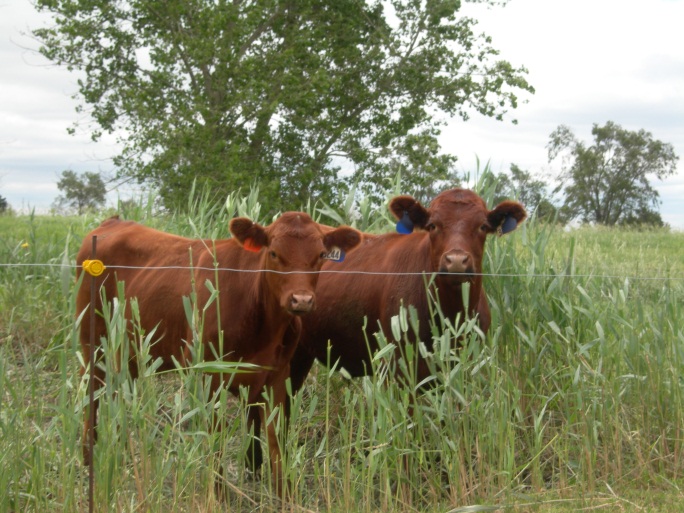
By Steve Young, UNL Weed Ecologist
Invasive plants, noxious weeds, and undesirable vegetation are terms that most landowners and livestock producers are familiar with. These troublesome plants have plagued rangelands and pastures for decades, or in some cases centuries and require continuous attention. Many methods have been developed for managing weeds, and depending on their location in the landscape can include very intense approaches to complete disregard; the latter not recommended. While the method employed is critical for successful weed control, so is an understanding of the attributes of the specific weed and knowing how the environment impacts its spread and distribution. In rangelands and pastures, low intensity management is common and justified as the large and vast acreages provide little incentive for intense management that is used in cropping systems. Nevertheless, producing livestock or maintaining CRP on rangelands and pastures is more than just “letting the land take care of itself.” In these cases, weedy and invasive plants can establish and proliferate and cause serious problems, including the nearly impossible task of eradicating them.
The Nebraska Department of Agriculture has a list of noxious weeds that require management (http://www.nda.nebraska.gov/noxious_weed/). A few of the more familiar ones are Canada thistle, leafy spurge, and non-native common reed, which are found in rangelands, pastures, and riparian areas. These three species have the same perennial growth habit and can create dense monocultures that prevent other desirable vegetation from growing and in some areas restrict access by animals and/or humans. Canada thistle and leafy spurge thrive in degraded areas where there is little competition and can even become a nuisance in a healthy, robust pasture or rangeland. Similarly, common reed (Phragmites) proliferates in river channels and wetlands that are shallow, have low or intermittent flows, and lack competitive vegetation. In addition to the state-listed noxious weeds in Nebraska, there are other problematic plant species that occur on rangelands, pastures, and wild lands that are not regulated but equally as challenging to manage and include eastern redcedar, soapweed yucca, and others.
With limited resources, landowners and producers are often stretched thin to effectively manage large acreages. Often, a management plan that has a well-defined goal and long-term strategies for reaching a desirable outcome is missing. Landowners and producers may not have the knowledge to develop a plan or resources to implement even the simplest approaches. Without direct intervention, the undesirable vegetation can become the dominant vegetation over time. With increasing disturbance events from flooding or drought, noxious and invasive plants will take advantage of reduced competition by the compromised desirable plants and expand their range.
With all of these concerns, it may seem like all hope is lost for getting control of undesirable vegetation. But, what few producers and land owners might not realize is that the livestock that they own or manage could be part of the answer to their weed problems, even state-listed noxious weeds. Research has shown that animals can be trained to perform certain tasks. Throughout history, animals used for farm related activities and other labor intensive operations have received a certain amount of human direction. Even wild horses that are tamed require training to accept a saddle and ultimately a rider. Most everyone has been to or seen the circus where they have been training animals for decades to do some of the most amazing feats without regard for size or fierceness. With all of these accounts, why is it difficult for us to think that it is impossible to train animals to eat weeds? Maybe it is because we can’t imagine an animal actually choosing a weed over a desirable forage species. Or, maybe we think the nutritional content of weeds are so low that livestock cannot possibly make realistic gains in body weight for market. Whatever the case, we might need to change our thinking because using trained livestock to manage weeds really makes sense in terms of economics (no additional inputs), resources (using available labor – animals), spatial scales (livestock will cover the acreage to find the plants), and the environment (reducing noxious, undesirable plants).
A research group is being assembled at the West Central Research & Extension Center to address the topic of training livestock to manage undesirable vegetation. They have met once and are preparing to implement long-term studies that will help answer questions, such as “what are the long-term effects on plant communities that have been selectively grazed?”, “can trained livestock eradicate undesirable vegetation?”, and “what are the trade-offs in cattle selecting certain types of vegetation?”. If you are interested in participating, please fill out this short survey (http://www.surveymonkey.com/s/9HJH7X9). We’re going to get started soon and want to include as many participants as possible. For more information, please contact Steve Young (steve.young@unl.edu).